The Apple Watch Review
by Joshua Ho & Brandon Chester on July 20, 2015 8:00 AM EST- Posted in
- Wearables
- Apple
- Mobile
- Apple Watch
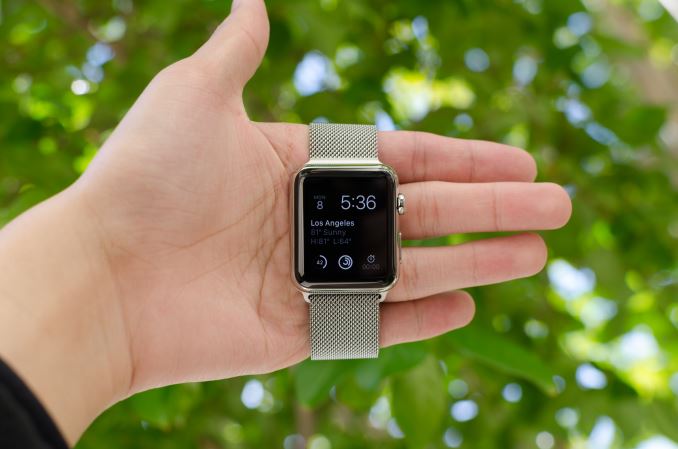
Prior to the launch of the Apple Watch, there had been rumors that Apple would make a watch for quite some time. In a broader sense, the wearables industry has become an area of significant interest as the next growth market after devices like tablets and smartphones as the high-end market became saturated and much of the growth that previously existed in the mobile space started to level out. This has resulted in a new alignment of markets and technology; the markets are ripe for a new device to recapture the wild growth of smartphones, and in the 8 years since the launch of the iPhone the inexorable march of Moore's Law has seen another 4 generations of improvements in technology. This time is finally right, it seems, to take a crack at something even smaller and more personal than the smartphone: the watch.
About two years ago, we put out our first wearable review, which examined Samsung’s Galaxy Gear. In the time since then, Android Wear has been launched, with numerous OEMs launching some form of wearable using Google’s wearable OS. However, Apple remained curiously absent from the field despite numerous rumors suggesting that Apple would soon launch a wearable. Last year, Apple announced the Apple Watch, but it wasn’t until just a few months ago that it finally went on sale.
Consequently, Apple didn’t get a first-movers advantage getting into wearables, though it remains to be seen whether that would even matter. As the creator of the iPhone and frequently on the cutting edge of technology and design, Apple had enough good will with the public to be late, and at the same time with all eyes on them they could not afford to screw up. The end result is that though by no means a slight towards Apple’s competitors, there is a clear distinction between everything that has come before the Apple Watch and everything that will come after. For the consumer market as a whole, the launch of the Apple Watch signifies that wearables have moved beyond the early adopter phase for techies, and are now being pitched at (and purchased by) the wider consumer market.
Normally, it’s easy enough to jump straight into what the device is and what’s new about said device, but in the case of the Apple Watch it’s really important that we explore the world in which this watch exists. The world is divided into people that wear watches, and people that don’t. Apple faces the distinct problem is trying to sell to both audiences, which have very different desires from a watch. The people that already have watches don’t want to give up the almost infinite battery life of conventional watches, high levels of water resistance, or anything else that is an accepted standard for watches.
The people that don’t wear watches are probably the closest thing to a clean slate that we’ll get when it comes to the wearable market. On a personal note, I fall into this camp, as I pretty much grew up in the age of widespread cellphone adoption. One of the convenient things about a phone is that they usually have the time on them, along with alarm and timer functionality. For me, this effectively meant that there was no point to wearing a watch. I also tended to have problems with the logistics involved in wearing a watch. In general, wristbands had an amazing tendency to either be too tight or too loose no matter how I adjusted the band. These issues were also compounded with any sort of physical exertion, as sweat tended to collect under the band which made wearing a watch noticeably more uncomfortable. These ergonomic issues, combined with the lack of functionality in a watch, ultimately made me stop wearing watches. Even before cellphones, wall-mounted clocks were more than sufficient for me when it came to checking the time, although I suspect I was far too young for time to really matter all that much.
Of course, I have been trying out various wearables over the course of the past few years. Although I didn’t try LG’s G Watch, I have been able to use the Pebble Steel and Motorola’s Moto 360. However, it was really a challenge for me to find anything to say about these wearables. They could definitely tell the time, and they had some extra functionality, but many of the same problems remained. The wearables I tested just weren’t all that comfortable to wear, and due to some technology limitations both weren’t really all that compelling to use. They could manage notifications, but other than that I found the functionality to be rather lacking. I often would forget to put them on at all before setting out for the day, and when I did I didn’t feel any particular need to go back to put it on my wrist. After a few months, I completely forgot about these wearables and stopped wearing them. At the time, I honestly felt like wearables could end up being another passing fad because it seemed most wearables faced similar barriers in terms of getting people to keep wearing them. Wearables like Fitbit suffered from a pretty significant abandonment rate, and given that I did the same for both the Pebble Steel and Moto 360 it increasingly felt like this would be a persistent problem.
In this context, it seems easy for Apple to fail. Generally speaking, no one has really figured out how to solve the problem of wearable adoption, chiefly because the functionality offered often wasn’t very compelling, and broadly speaking these wearables were often not well-designed. One of the first places we can start with the Apple Watch is the spec sheet. We can speak in empty platitudes about how specs don’t matter, but in the case of something like Apple Watch they definitely will. The right components won’t ensure success, but the wrong components can ensure a poor user experience.
| Apple Watch 38mm | Apple Watch 42mm | |
| SoC | Apple S1 520MHz CPU | Apple S1 520MHz CPU |
| RAM/NAND | 512MB LPDDR3(?) 8GB NAND |
512MB LPDDR3(?) 8GB NAND |
| Display | 1.32” 272x340 LG POLED | 1.5” 312x390 LG POLED |
| Dimensions | 38.6 x 33.3 x 10.5mm, 25/40/55/54 grams (Sport/Watch/Gold/Rose Gold) |
42 x 35.9 x 10.5mm, 30/50/69/67 grams (Sport/Watch/Gold/Rose Gold) |
| Battery | 205 mAh (0.78 Whr) | 246 mAh (0.93 Whr) |
| OS | WatchOS 1 | WatchOS 1 |
| Connectivity | 802.11/b/g/n + BT 4.0, NFC | 802.11/b/g/n + BT 4.0, NFC |
| Price | $349/549/10,000 (Sport/Watch/Edition) | $399/599/12,000 (Sport/Watch/Edition) |
As we can see, Apple has elected for some relatively conservative specifications. The SoC is relatively low power in nature, and the amount of RAM is probably about right for the kinds of tasks that a wearable will be used for at this time. The display is also of a decent resolution given the display size, and all the necessary wireless connectivity is present. It is notable that Apple is using a relatively small battery, but I suspect that this is necessary in order to fit all of the hardware into the casing of the watch. At least at a high level, it looks like Apple has put the right components into this wearable. However, it's going to take a deep examination of both technology and design to really figure out if Apple has avoided the pitfalls that I've discussed. One of the first and most obvious places to go first is the industrial and material design, which is what we'll talk about next.



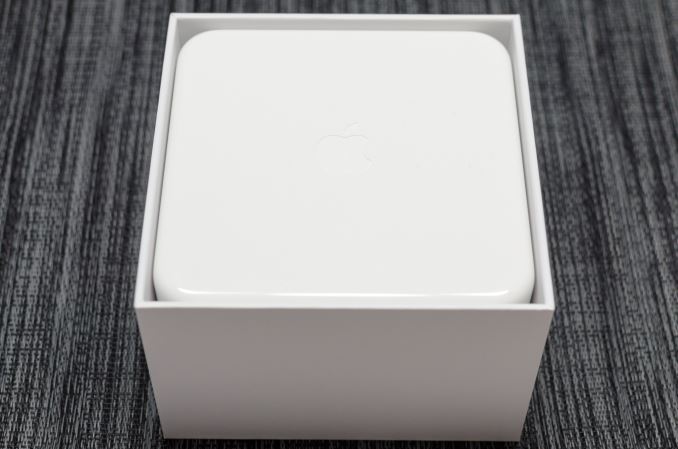
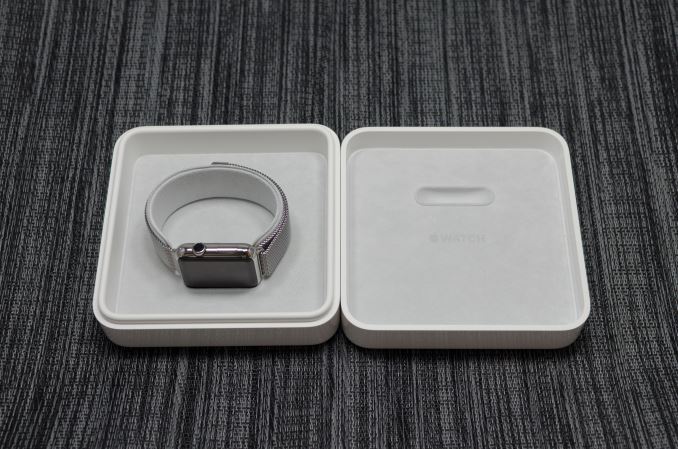
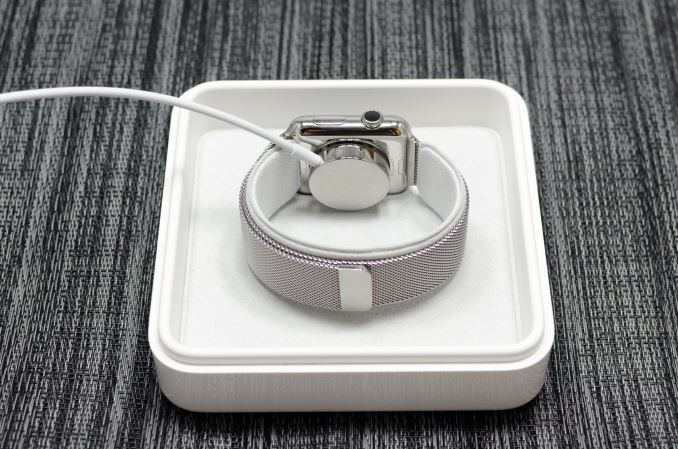

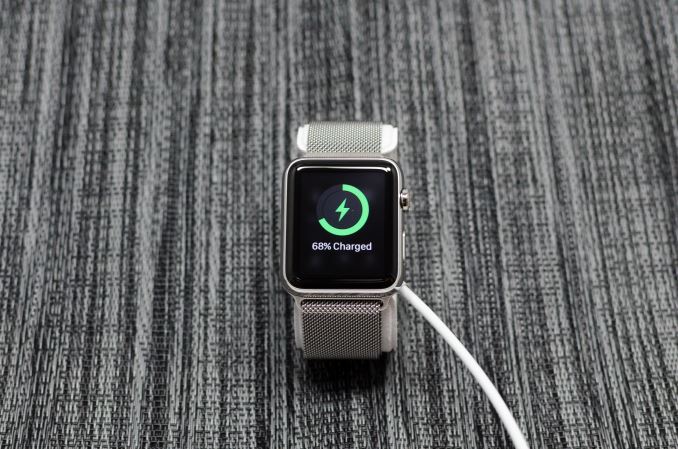








270 Comments
View All Comments
JoshHo - Tuesday, July 21, 2015 - link
It would be great to get specific instances of overly wordy areas, and information that you have learned elsewhere that is redundant in the review to improve our wearable reviews going forward.Blairh - Monday, July 20, 2015 - link
As an iPhone user I think the notifications aspect of the AW would be very appealing, but Apple is asking for too much money for such a luxury. And I'm talking about the Sport models. The SS models are ridiculously expensive. It's no surprise that roughly 3/4 of all AW sales have been the Sport models. Seriously you are nuts IMO to buy the SS model unless you have money to burn. Plus I think the Sport models are just nicer looking in general. And lighter to boot.Anyways, this review highlights a current glaring weakness which is the inability to respond to IM 3rd party apps directly on the AW. If you use WhatsApp or Facebook Messenger often as I do you are SOL if you want to respond with your AW right now. Perhaps this will change with the 2.0 update come fall, but still, right now this is really only ideal if you main communication is the messages app. Email is another story as there are several 3rd party email clients that offer voice dictation.
I'm waffling between an AW and the Vivosmart. The Vivosmart won't let me reply to any notifications from my wrist however it's a third of the price of the 38mm AW and feels awesome on your wrist.
I do believe in the future of the AW, but right now its got a lot of glaring holes to fill.
nrencoret - Monday, July 20, 2015 - link
The worst article I've ever read on this site by miles. Too many words for nothing insightful. What I find here is a desperate struggle to justify what cannot be justified. As a person who loves the site's content I'm stumped by the horrible mess I have just read just a few points:- Apple has "solved" how a watch has to fit like no other company, traditional (ie. Rolex) or tech focused. That is a simply mindboggling statement.
- The UI/UX is great. The Apple mouse and the iPhone have just one primary button for interacting. The crown, side button and force touch trilogy are the work of a comitee which couldn't settle for a simple means of interacting with a piece of technology. What Apple is best known for is how great they are at removing complexity -"just works" and "boom" come to mind- the reviewers were far to forgiving to all the usabily issues (ie. force touch discoverability). These would have been major issues on any other piece of technology.
- Understanding what it is you get for your money: If you own a jewel like a watch or ring its timeless and has an intangible value. The watch can cost a pretty penny for something that has no better hardware than whats out there. There is no inherent intangible value in the watch because as has been stated in the review there will be future iterations of it, killing the timeles argument. As such, this watch is a piece of technology not jewelery and thus, its way overpriced. Lets just see how many dads give their sons Apple Watches and how those sons give them to theirr own.
- Battery life of a single day for a timepiece is not even remotely acceptable. The Basis Peak, Fitbits and Pebbles may not be as smart but they nail the basic concept of a a time keeping device must do.
- Nowhere was there a real argument of how the current incarnation of the watch is mostly useless without being tethered. Basis Peak comes to mind as how useful a device can be with our without tether.
I could go on, given the amount of sheer nonsense of this review. I'm really dissapointed that this came from Anandtech.
alanpgh1 - Monday, July 20, 2015 - link
Awesome Review... and right on target.I've had an Apple Watch for 2 months, and it continues to be an important and non-intrusive assistant in my life. I seem to learn something new that is helpful all the time.
The only thing I ask the author to consider are these words from your review:
"Finally, "Hey Siri" works well in terms of activation, but it's really kind of disappointing that the hotword detection doesn't work with the display off. I suspect this is due to power requirements as I haven't seen any other wearable have screen-off hotword detection, but it would definitely be great to see such a feature in the future."
It is actually a feature to have the watch only listen for the "Hey Siri" hotword when the arm is lifted.
Otherwise, if listening all the time, the system would have false triggers. Think about it; this way of operation is by design.
Thanks for an excellent and thorough review!
TheRealArdrid - Tuesday, July 21, 2015 - link
Gotta admit: I didn't get past the second page of this review. This is dripping with the feel of an Apple shill piece. Am I really to believe that no other watch in history, including recent smartwatches, properly fit the author's wrist but the Apple Watch, with its amazing Milanese band, magically did? Statements like that completely destroy legitimacy and credibility. Come on man...zodiacfml - Tuesday, July 21, 2015 - link
Their failure is sticking to the old, physical idea of a watch.FunBunny2 - Tuesday, July 21, 2015 - link
-- Their failure is sticking to the old, physical idea of a watch.Yeah, and what would GUIs be without radio buttons, menus, and all of the other analog clones they're built on? Face it: it's just pixels made to look "physical".
Oxford Guy - Tuesday, July 21, 2015 - link
Honestly, I love that Apple is successful. The sound of PC-worshiping heads exploding all over the Internet is amusing. It lifts my spirits on a regular basis.Seriously, people... Apple didn't run over your mother, kill your dog, or beat your sister.
The level of nerd rage over Apple's success really is misplaced. There are far worse things to cry over than yet another big tech firm that dodges taxes and overprices stuff. It's not like Apple is the only one and it's not like society in general doesn't reward that behavior.
I've seen the anti-Apple zealotry for decades. It never changes. It always comes down to whinging about how much Apple charges, along with accusations that only gays, girls, and social-climbing superficial people use the products. In reality, despite their flaws, Apple products have been dependable workhorses for people for a long time, and some of them have been pretty innovative.
The Lisa was a thousand times more innovative than the IBM PC. Apple didn't execute because of some poor management and the sudden spike in DRAM cost (caused by Japanese firms pushing US firms out of the market with price dumping and then colluding to raise prices, as far as I have read). Yes, it was expensive but the platform was a very solid foundation for line of machines. Apple had an office suite, multitasking, protected memory, tool-less design, a bootloader that made it easy to boot from multiple operating systems, and a plethora of other modern features back in '83.
Unfortunately, the Mac was botched because it was turned from what was envisioned to be a $500 computer into a $1000 computer and then into a $2400 computer -- without making the underlying OS robust enough to justify that price or the hardware expandable enough. But, despite that, it had a very efficient GUI and people were willing to put up with bombs and freezes because that GUI was miles nicer to work with than Windows (up until 95 when things almost became as good on Windows, but not quite).
If you think Apple is so fraudulent then start your own company or get a job running one already out there and out-compete them. Then let us know about your success. Until then, find something more productive to do with your time than rant ineffectually on Internet forums.
Oxford Guy - Tuesday, July 21, 2015 - link
As for this product specifically, my advice is to wait for the next iteration that comes with a shrunken process. Apple's first iPad had a relatively short lifespan, rapidly orphaned. I wouldn't want to be stuck with this device if the same thing were to happen. It has generally been the same advice for quite some time: when Apple comes out with a new form factor, wait until version 2.Oxford Guy - Tuesday, July 21, 2015 - link
This even applied to the Mac, come to think of it. Jobs demoed (without telling the audience or the press, of course) a 512k prototype in order to run speech synthesis when he was unveiling the first Mac (128K, not expandable) to the press.